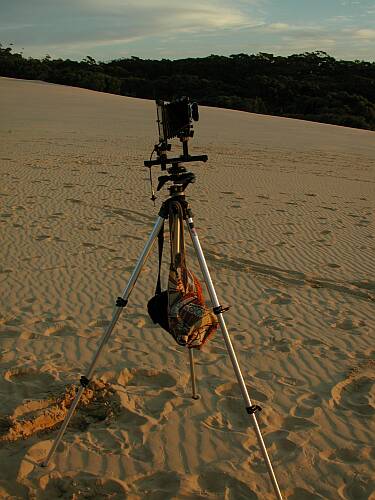Jonathon Delacour
Subscriber Member
In the thread on the Leica Macro-Elmarit 45mm f/2.8 lens, I noted that the lens dwarfed the GF1 and suggested that "if one is going to be working on a tripod anyway, an APS-C or full-frame DSLR will deliver superior results at the cost of not a lot more bulk."
nostatic agreed:

I already have a Gitzo 6x Carbon Fiber GT3531 Mountaineer tripod which, with a Markins M20 ballhead, I've been using with Nikon D300 and D700 bodies. But its weight negates the main advantage of using a G1 outfit. Since I like Gitzo tripods, a logical smaller and lighter choice would be either the GT2531 or the GT1531. The key features of the three models are summarized in the following table.

The GT1531 and GT2531 are approximately the same size folded and the GT1531 and GT2531 are 53% and 64% respectively of the weight of the GT3531. The price difference between them is not significant.
Fearing that the GT1531 will be too light, I'm inclined to play it safe and get the GT2531. But, since I can't find a store in Sydney which has both models in stock for me to compare, I'm hoping that one or more forum members might have direct experience of using one or both and might be able to suggest which would be the best choice.
nostatic agreed:
To which, Vivek rather sensibly replied:And yes, if you need to carry a tripod then you might as well take a larger body along.
He's right, I thought. But how much smaller and lighter? Given that I specifically want the tripod to support a G1 plus a Pen F 250/5 telephoto lens. The 250/5 lens weighs 800g (1.76 lbs) and has an integral tripod bush, as shown in this picture:You can also take a smaller, lighter tripod.

I already have a Gitzo 6x Carbon Fiber GT3531 Mountaineer tripod which, with a Markins M20 ballhead, I've been using with Nikon D300 and D700 bodies. But its weight negates the main advantage of using a G1 outfit. Since I like Gitzo tripods, a logical smaller and lighter choice would be either the GT2531 or the GT1531. The key features of the three models are summarized in the following table.

The GT1531 and GT2531 are approximately the same size folded and the GT1531 and GT2531 are 53% and 64% respectively of the weight of the GT3531. The price difference between them is not significant.
Fearing that the GT1531 will be too light, I'm inclined to play it safe and get the GT2531. But, since I can't find a store in Sydney which has both models in stock for me to compare, I'm hoping that one or more forum members might have direct experience of using one or both and might be able to suggest which would be the best choice.





